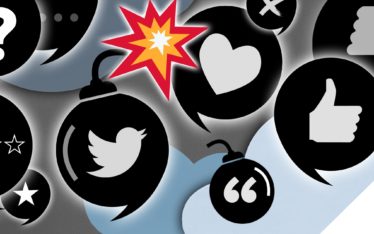Brainstorm sessions aren’t just “slack off” time. Not for agencies. For us it’s serious business. Our reputation lies largely in the creativity of our work. Without brainstorm sessions, we can’t collaborate, share ideas, or come up with unique strategies.
Over the last 25 years, I’ve been a part of countless brainstorm sessions. And I’ve noticed that companies tend to make the same mistakes when it comes to running brainstorm sessions of their own. Those mistakes can cost you. If you can learn anything from agencies, it’s how to invite creativity and allow the best ideas to flourish. Here are our top 5:
-
R-E-S-P-E-C-T
Brainstorm sessions deserve the same level of respect given to other team meetings. Companies tend to think that because it’s a “creative session” it’s somehow less important. They invite people to join “if they have time” rather than scheduling a time that works for everyone. Schedule brainstorm sessions just like you do other meetings. Reserve a space and have a plan. It’s difficult to walk into a brainstorm session without some idea of what you’ll be brainstorming about. Give attendees some advance notice of the topic and what you’re hoping to get out of the time so that they can prepare in advance. This will make it easier to dive in and you’ll waste less time getting everyone up to speed.
-
WHO’S WHO?
Don’t make the mistake of thinking that only executive or director level employees should take part. In 1994, the ad agency for which I worked held a brainstorm session for their largest client. We had an opportunity to grow our current relationship and work on a larger campaign. I walked into our conference room expecting to see it filled with creatives and account execs. But along with these folks, were employees from the accounting and production departments. The best idea that day came from our receptionist and was built into our final presentation. Don’t discount people who aren’t on your team. Every one of us is a consumer at the end of the day and each of us brings a unique perspective to the table.
-
SET THE STAGE
It can be tough to think creatively when you’re surround by white walls and cubicles. If your office environment isn’t what you’d call inspiring, consider holding the meeting elsewhere. If the weather is great, take the team outside! Crisp fall weather, plenty of sunshine and a cool breeze can help shake off the Monday doldrums and get everyone into a more relaxed frame of mind.
-
PREPARE FOR KICK-OFF
Most meetings start a bit formally. This is not the time for formality. Help your attendees get into a creative state of mind! Try kicking off the session by showing a funny video, telling a joke or asking a compelling question. There is a time and place for structured, serious meetings. This isn’t one of them. Creatives need to feel empowered to think creatively out loud. And especially for team members who aren’t in a creative position, these folks need a little extra dose of love. Sometimes people need to talk through their thoughts out loud to get to the point they’re trying to make. It can be intimidating to put yourself out there in a public setting! Encourage collaboration and participation by nodding “yes” a lot rather than shaking your head “no.” Don’t cut anyone off, and respond with “Yes, and” language rather than “no, that won’t work.”
-
KEEP IT MOVING
Brainstorm sessions have natural ebbs and flows. Pay attention and be ready to intercept when ideas are stalled. Change the topic, tell a joke, take a quick break. If communication is still faltering after two breaks, call it a day. Recap the ideas you’ve come up with so far and post your list in a public area where team members can feel free to add their own thoughts. Google docs are great, too!
Let 2019 be a year of inspiration and creativity! Need some help facilitating all those great ideas? We specialize in creating loud & clear brand communications when it matters most. Give us a shout here.


